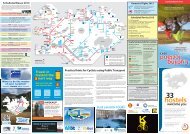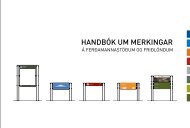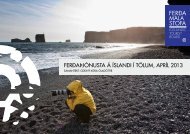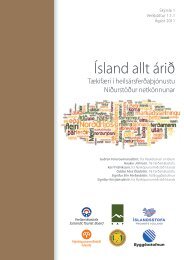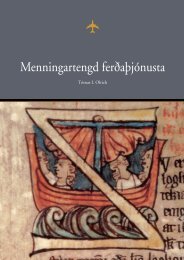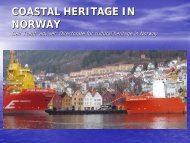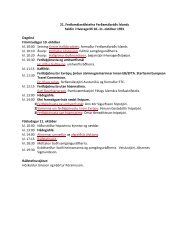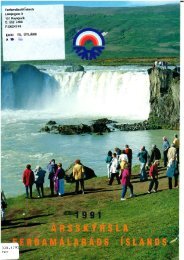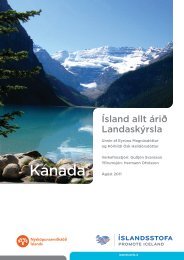Untitled
Untitled
Untitled
Create successful ePaper yourself
Turn your PDF publications into a flip-book with our unique Google optimized e-Paper software.
esearch but also “education and cooperation in tourism studies”. In<br />
accordance with this we have been working also with a second objective:<br />
the report should be able to be read and used as an educational text in<br />
tourism studies at undergraduate level. Consequently, we have written the<br />
report as an academic text that introduces tourism theory for that student<br />
audience, making it as accessible as we can without abandoning in-depth<br />
research insights. In that respect the report is a first pilot version of what<br />
will subsequently be transformed into a proper textbook.<br />
It should be noted, though, that we have not tried to write a user’s<br />
manual, neither for students nor industry entrepreneurs. We have not been<br />
able to avoid academic vocabulary and reasoning, but we hope that this<br />
second objective with the report has resulted in a kind of text that could<br />
also potentially benefit other readers, such as policy-makers and those who<br />
are part of the tourism industry. In addition, underlying both of our<br />
objectives has been a wish to convey something of the inherent social,<br />
cultural and geographical complexity that we believe characterises much<br />
of contemporary tourism. It is our conviction that this complexity will<br />
continue to haunt and challenge future tourism as well as tourism theory<br />
and tourism research, the component parts of tourism studies as an<br />
academic field of inquiry (Aramberri 2009, Butler 2009).<br />
Images & tourism studies<br />
Our empirical point of departure in coming to terms with the reports<br />
objectives is: images. Everyone who travels on a research visa to the land<br />
of tourism studies will, undoubtedly, soon enough find out that images in<br />
various forms have since long been a central concern. In this report we<br />
align ourselves with this longstanding interest in, and research on images<br />
in tourism studies. It should however be noted that we also take a specific<br />
and slightly different route of our own which we refer to as “tourist and<br />
tourism imaginationings”. What that entails will be outlined further<br />
throughout the report, but the key is that we want to expand traditional<br />
notions and understandings of images in and of tourism by moving and<br />
situating them in broader contemporary social, cultural and geographical<br />
contexts.<br />
To begin with, images have been a prolific topic for research in<br />
tourism studies for a long time. There are several reasons why they have<br />
been regarded as highly important, but among them two interrelated<br />
aspects are especially relevant here.<br />
2



